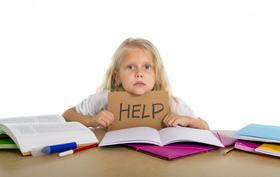Serving 311 students in grades 7-8, Edison Junior High School ranks in the bottom 50% of all schools in Illinois for overall test scores (math proficiency is top 50%, and reading proficiency is top 50%).
The percentage of students achieving proficiency in math is 20% (which is lower than the Illinois state average of 28%). The percentage of students achieving proficiency in reading/language arts is 15% (which is lower than the Illinois state average of 30%).
The student:teacher ratio of 12:1 is lower than the Illinois state level of 13:1.
Minority enrollment is 11% of the student body (majority Hispanic), which is lower than the Illinois state average of 55% (majority Hispanic).
Quick Stats (2025)
- Grades: 7-8
- Enrollment: 311 students
- Student:Teacher Ratio: 12:1
- Minority Enrollment: 11%
- Overall Testing Rank: Bottom 50% in IL
- Math Proficiency: 20% (Top 50%)
- Reading Proficiency: 15% (Btm 50%)
- Science Proficiency: 40-44% (Btm 50%)
- Source: National Center for Education Statistics (NCES), IL Dept. of Education
School Overview
Edison Junior High School's student population of 311 students has declined by 11% over five school years.
The teacher population of 25 teachers has grown by 8% over five school years.
Grades Offered
Grades 7-8
Total Students
311 students
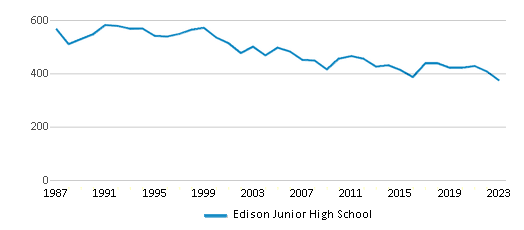
Gender %
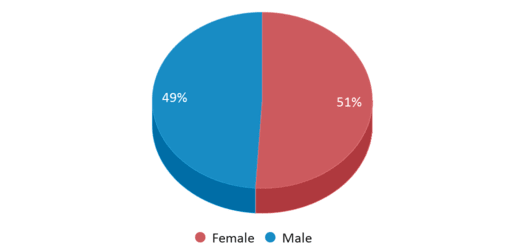
Total Classroom Teachers
25 teachers
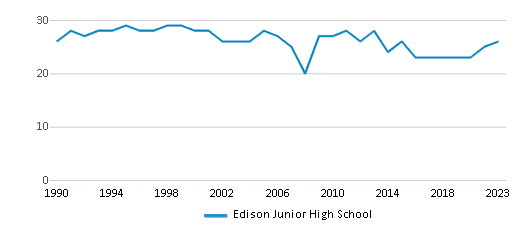
Students by Grade
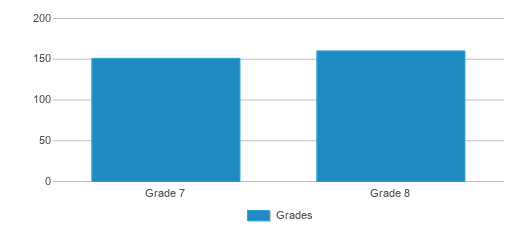
School Rankings
Edison Junior High School ranks within the bottom 50% of all 3,426 schools in Illinois (based off of combined math and reading proficiency testing data).
The diversity score of Edison Junior High School is 0.20, which is less than the diversity score at state average of 0.69. The school's diversity has stayed relatively flat over five school years.
Overall Testing Rank
#2158 out of 3426 schools
(Bottom 50%)
(Bottom 50%)
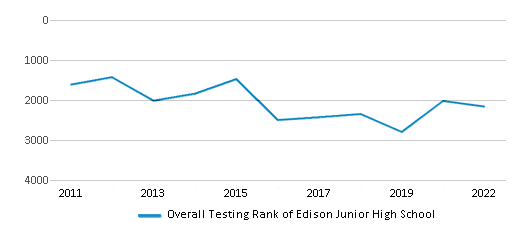
Math Test Scores (% Proficient)
(20-21)20%
28%
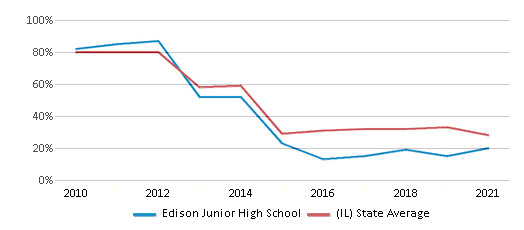
Reading/Language Arts Test Scores (% Proficient)
15%
30%
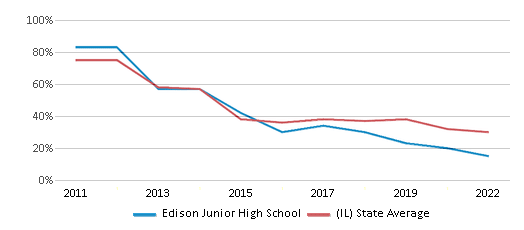
Science Test Scores (% Proficient)
40-44%
50%
Student : Teacher Ratio
12:1
13:1
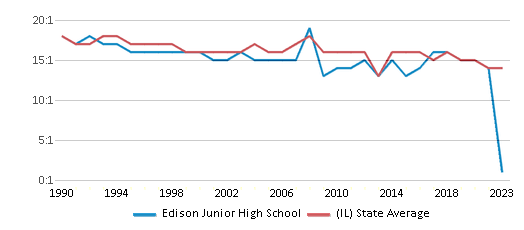
American Indian
n/a
n/a
Asian
n/a
6%
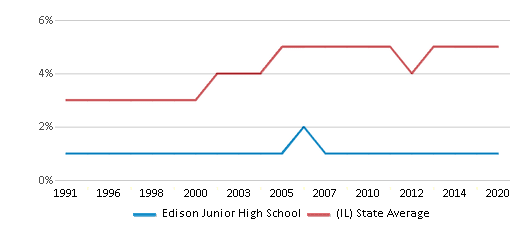
Hispanic
5%
28%
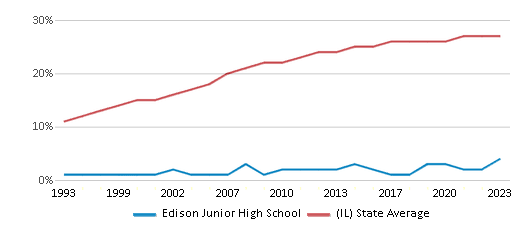
Black
1%
17%
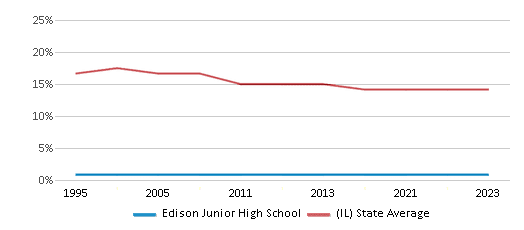
White
89%
45%

Hawaiian
n/a
n/a
Two or more races
5%
4%
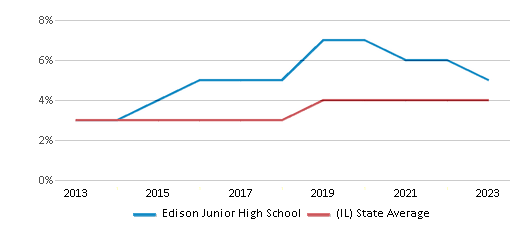
All Ethnic Groups
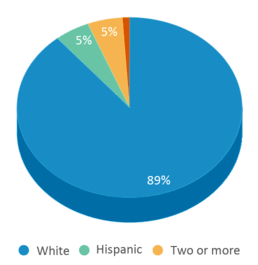

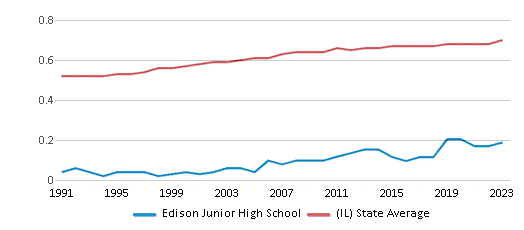
Eligible for Free Lunch
51%
43%
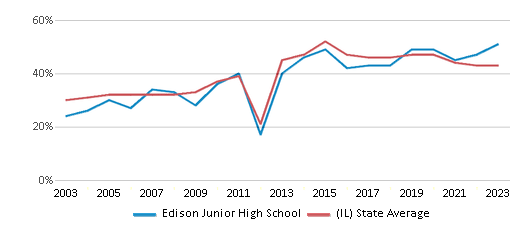
Eligible for Reduced Lunch
10%
4%

School Statewide Testing
School District Name
Source: National Center for Education Statistics (NCES), IL Dept. of Education
Frequently Asked Questions
What is Edison Junior High School's ranking?
Edison Junior High School is ranked #2158 out of 3,426 schools, which ranks it among the bottom 50% of public schools in Illinois.
What schools are Edison Junior High School often compared to?
Edison Junior High Schoolis often viewed alongside schools like Broadmoor Junior High School, Rankin Elementary School by visitors of our site.
What percent of students have achieved state testing proficiency in math and reading?
20% of students have achieved math proficiency (compared to the 28% IL state average), while 15% of students have achieved reading proficiency (compared to the 30% IL state average).
How many students attend Edison Junior High School?
311 students attend Edison Junior High School.
What is the racial composition of the student body?
89% of Edison Junior High School students are White, 5% of students are Hispanic, 5% of students are Two or more races, and 1% of students are Black.
What is the student:teacher ratio of Edison Junior High School?
Edison Junior High School has a student ration of 12:1, which is lower than the Illinois state average of 13:1.
What grades does Edison Junior High School offer ?
Edison Junior High School offers enrollment in grades 7-8
What school district is Edison Junior High School part of?
Edison Junior High School is part of Pekin PSD 108 School District.
School Calendar
View the Edison Junior High School yearly calendar below.
School Reviews
Review Edison Junior High School. Reviews should be a few sentences in length. Please include any comments on:
- Quality of academic programs, teachers, and facilities
- Availability of music, art, sports and other extracurricular activities
Recent Articles
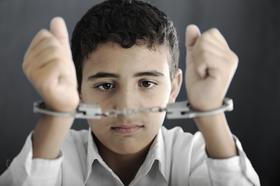
School-to-Prison Pipeline Persists Despite Local, State and National Efforts
Inadequate funding and resources for schools, harsh zero-tolerance discipline policies, police presence in public schools, and de facto segregation continue to create school environments in which poor and minority students have little chance of succeeding. The result is a continuation of the school-to-prison pipeline that has been commonplace in the American education system for decades, despite federal, state and local efforts to curb the problem.

How the Arts Benefit Your Children Academically and Behaviorally
Often underfunded in the past, the arts are gaining a resurgence in support as research shows benefits for children academically, along with improvements in behavior and attendance.

February 05, 2025
Understanding the U.S. Department of Education: Structure, Impact, and EvolutionWe explore how the Department of Education shapes American education, from its cabinet-level leadership to its impact on millions of students, written for general audiences seeking clarity on this vital institution.




